<< Previous | Displaying results 2926-2950 of 6772 for "" | Next >>
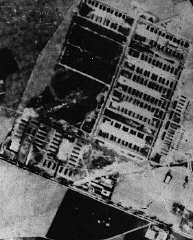
Charred remains of corpses near crematoria in the Majdanek camp, after liberation. Poland, after July 22, 1944.
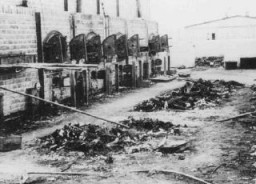
View of watchtower and fence at the Majdanek camp, after liberation. Poland, after July 22, 1944.

View of the furnaces remaining in the Majdanek camp by the time of liberation. The Germans had attempted to destroy the building as Soviet forces advanced in 1944. Majdanek, Poland, after July 22, 1944.
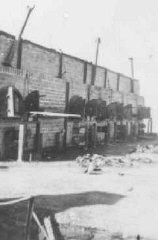
A Soviet soldier walks through a mound of victims' shoes piled outside a warehouse in Majdanek soon after the liberation. Majdanek, Poland, August 1944.
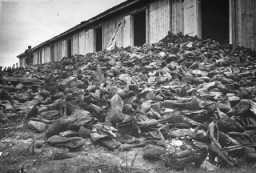
Jews are forced into boxcars for deportation to the Belzec killing center. Lublin, Poland, 1942.
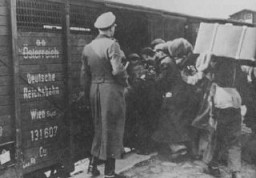
View after the obliteration of the Belzec killing center showing a railway shed where victims' belongings were stored. Belzec, Poland, 1944.
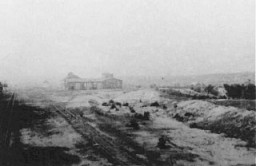
Group portrait of 12 of the participants in the October 14, 1943, uprising at the Sobibor killing center, during which prisoners killed 11 SS staff.
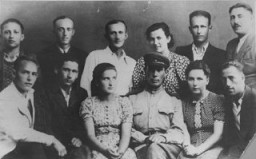
Studio portrait of Chava Leichter, murdered in the Treblinka killing center in 1942 at the age of 25. Her brother Chaim emigrated to Palestine in 1937 on the boat Polania. He served in the British army in Libya during the war. This photograph was taken in 1939.
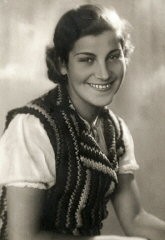
Under guard, Jewish men, women, and children board trains during deportation from Siedlce to the Treblinka killing center. Siedlce, Poland, August 1942.
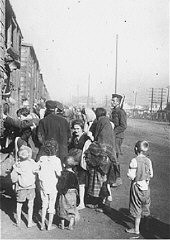
Bulgarian authorities round up Jews in occupied Macedonia for deportation. They were first held in a camp in Skopje and then deported to the Treblinka killing center in German-occupied Poland. Skopje, Yugoslavia, March 1943.
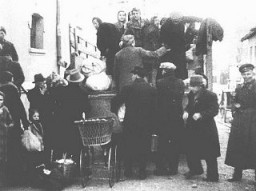
Jews from Bulgarian-occupied Macedonia who were rounded up and assembled in the Tobacco Monopoly transit camp in Skopje prepare to board deportation trains. Skopje, Yugoslavia, March 1943.
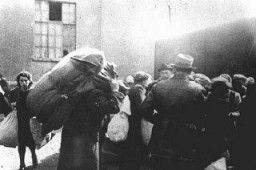
Macedonian Jews prepare to board a deportation train in Skopje. Skopje, Yugoslavia, March 1943. The Jews of Bulgarian-occupied Thrace and Macedonia were deported in March 1943. On March 11, 1943, over 7,000 Macedonian Jews from Skopje, Bitola, and Stip were rounded up and assembled at the Tobacco Monopoly in Skopje, whose several buildings had been hastily converted into a transit camp. The Macedonian Jews were kept there between eleven and eighteen days, before being deported by train in three transports…
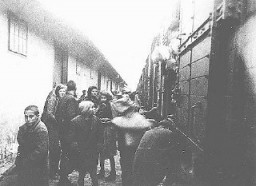
Scene during the deportation of Jews from Thrace to the Treblinka killing center. Lom, Bulgaria, March 1943.
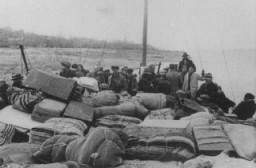
Train station near the Treblinka killing center. This photo was found in an album belonging to camp commandant Kurt Franz. Poland, 1942-1943.
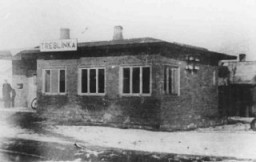
Portrait of Franz Stangl, the first official commandant of the Sobibor killing center. He is later transferred to the Treblinka killing center, where he served as commandant from September 1942–August 1943.
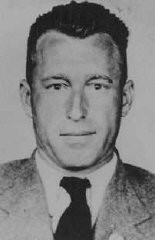
Distant view of smoke from the Treblinka killing center, set on fire by prisoners during a revolt. This scene was photographed by a railway worker. Treblinka, Poland, August 2, 1943.
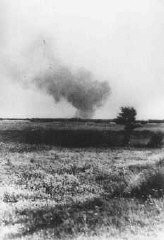
Three participants in the Treblinka uprising who escaped and survived the war. Photograph taken in Warsaw, Poland, 1945. Pictured from left to right are: Abraham Kolski, Lachman and Brenner. After participating in the Treblinka uprising, they escaped from the camp and found temporary refuge in the nearby forest. Afterwards they hid with a Christian family until liberation.
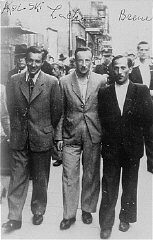
View of the village of Chelmno. To the left of the church is the Schloss, one of two sites of the Chelmno camp. The Schloss, an old country estate, served as the reception and killing center for victims until it was demolished in April 1943. Chelmno, Poland, 1939–1943.
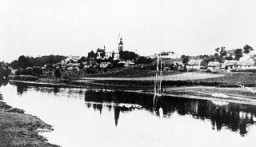
Young German soldiers assist in the deportation of Jews from the Zychlin ghetto to the Chelmno killing center. The Nazis planned this deportation to fall on the Jewish holiday of Purim. Poland, March 3, 1942.
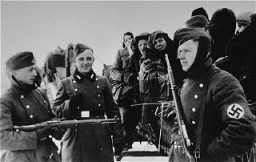
View of the manor house in Chelmno that became the site of the Chelmno killing center. Chelmno, Poland, 1939.
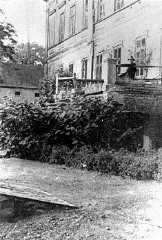
SS personnel stand guard while Lodz ghetto police board Jews onto a deportation train bound for Chelmno or Auschwitz. Lodz, Poland, between May and August 1944.
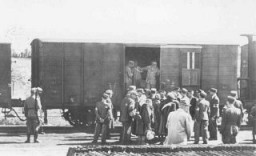
Site at which the SS shot and burned the last 45 of 48 prisoners at Chelmno. The other three prisoners escaped. Chelmno, Poland, 1945.
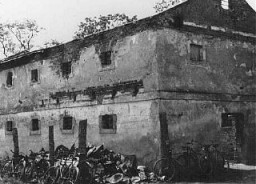
Postwar photograph of a building in Dabie where the possessions of Jews killed at the nearby Chelmno killing center were stored. Dabie, Poland, June 1945.
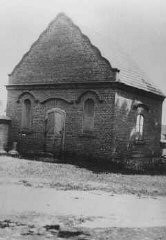
Postwar photo of a church in the village of Chelmno. Jews were kept in this building en route to the Chelmno killing center. Chelmno, Poland, June 1945.
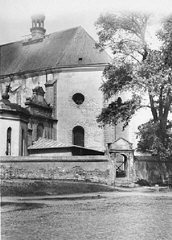
We would like to thank Crown Family Philanthropies, Abe and Ida Cooper Foundation, the Claims Conference, EVZ, and BMF for supporting the ongoing work to create content and resources for the Holocaust Encyclopedia. View the list of donor acknowledgement.